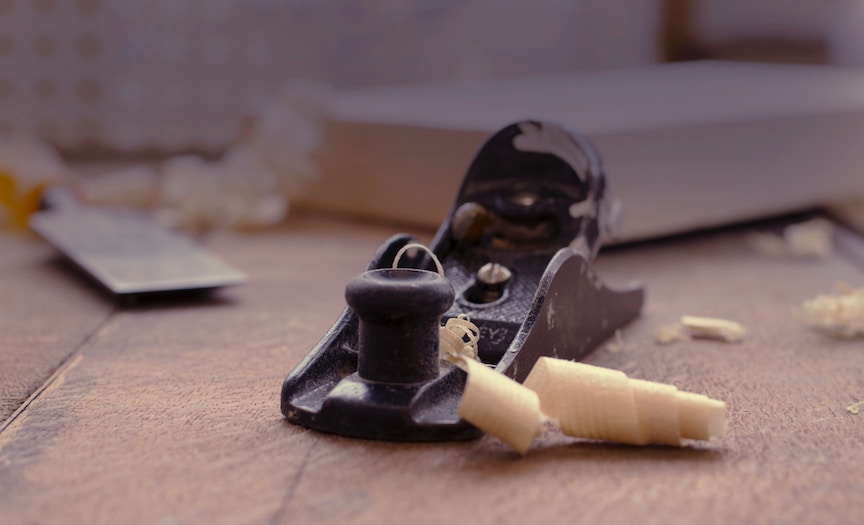There are several principal differences between the two kinds of planes, Japanese and western used throughout the world. One of the more simplistic is the fact that western style planes are designed to be pushed across the surface of the wood, while the Japanese ones are made to be pulled. While these are the preferred methods, it need not necessarily be so. I enjoy using both kinds of planes, I have many of each, but I generally pull them all. It seems so much more natural to me and effortless.
Another obvious distinction between the two styles of plane is the materials from which they are made. Western planes can still be found made of wooden bodies, but the most common version has them made of steel or some other metal. The only thing on them that was wooden was the handles, although the cost-efficient ( read: crap) modern versions of them have annoying plastic handles. Not so with the two most high-level western planes produced today from Lie-Nielsen and Veritas. Very high quality they are, with prices to match. But there is no other piece of a woodworker’s tool cabinet that is more worth spending extra money. The western planes typically also have various knobs and screws and levers for fine adjustment of the iron (or blade). Unless you are buying one of the very high-end planes, all those bells and whistles are fool’s gold and can get in your way as much as help. The adjusting mechanisms either come poorly made out of the box, or wear to a certain sloppiness with time.
The Japanese planes are disarmingly simple. In appearance. Just a simple block of aged wood, generally red or white oak, with a steel blade, wedged into very carefully cut tapered mortises. Adjustment on these planes is all achieved by the gentle tap of a small hammer. Tap the blade on the top of the iron to lower the blade, tap the back of the wooden plane body to back it up. At first glance, it may seem less accurate to adjust a plane in this manner, but with just a little practice you will find these planes and you will become very good friends.
But the biggest difference between Japanese planes (and chisels) is the steel blade. Which, when you think of it, is really the most important part of a plane, or any cutting tool for that matter. Japanese plane blades are laminated, with, a very hard steel, just on the cutting edge, again, where all, the action is. This is then backed by a softer steel that dampens vibration just a bit, and also makes for a less laborious sharpening process. The only western planes that I know of with that high a quality of steel are, again Lie-Nielsen and Veritas. But their blades are of one solid piece of steel and that slows the grinding process considerably. Hardened, quality steel is important for achieving and maintaining really fine cutting edges. Less expensive planes scrimp on this and are, as a result, quite inferior. You will notice that the good western planes have thicker blades than the cheap ones, close to the dimensions of the Japanese ones. This aids greatly in achieving a smoother cut.
So which style of plane is for you? If you are new at this, try and find a friend or a store that has both kinds. Take a number of strokes with them and see if you don’t start to feel a stronger urge to keep one of them in your hands. My sense is that most westerners will see the western style plane as more recognizable, and perhaps tend to go that direction. There is a long history of craftsman all over the world becoming maestros with their western planes and doing magnificent work. Same with the Japanese planes, although I will say that if you check online you will find footage of Japanese masters whose work with a plane will make your jaw drop. But, in the end, it is each individual’s familiarity with their own planes that is the greatest predictor of success. That and developing a great deal of skill at the sharpening stones.
If I was pushed to make a recommendation, I would lean towards Japanese planes and chisels for one simple reason: the steel.

